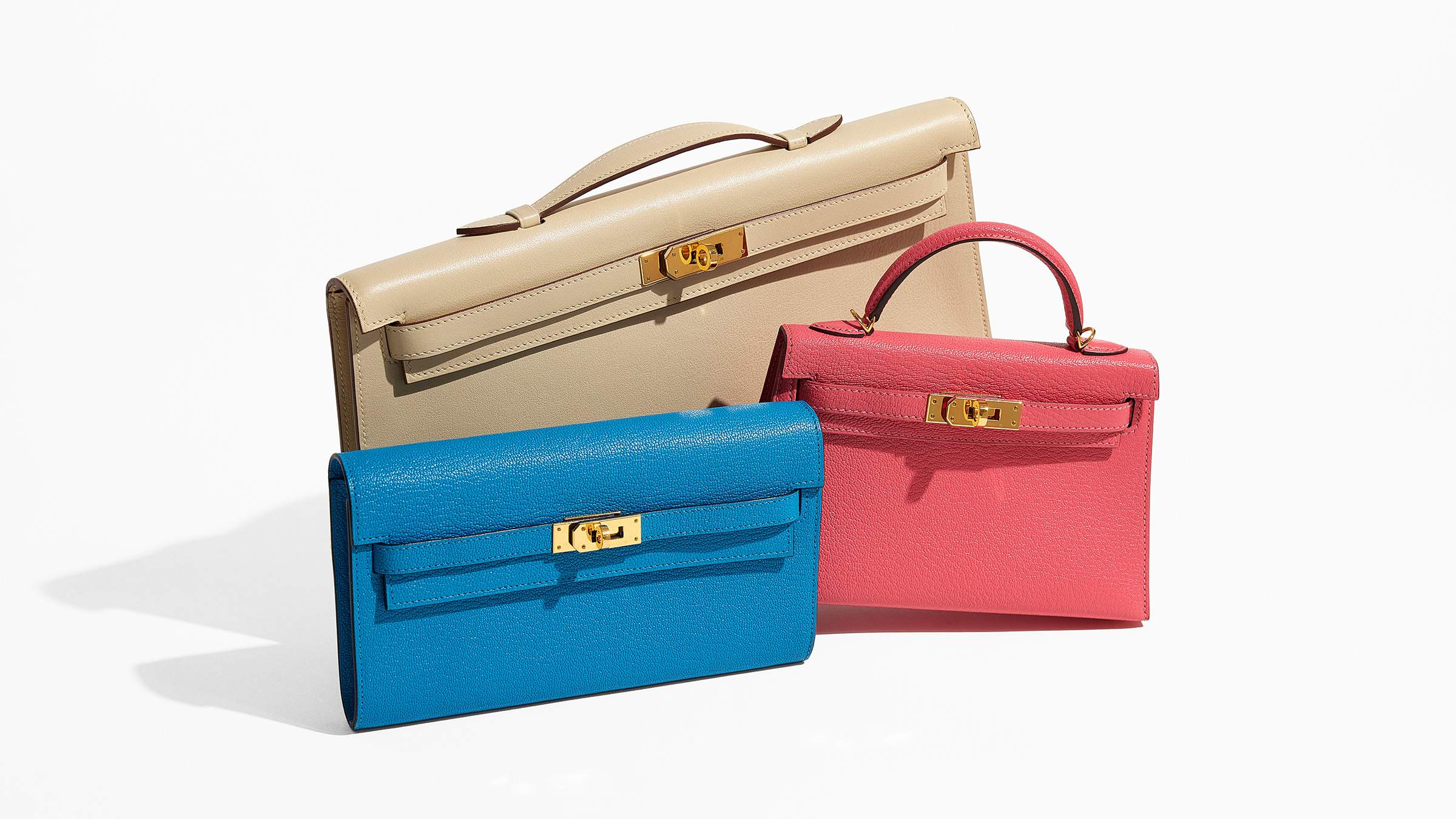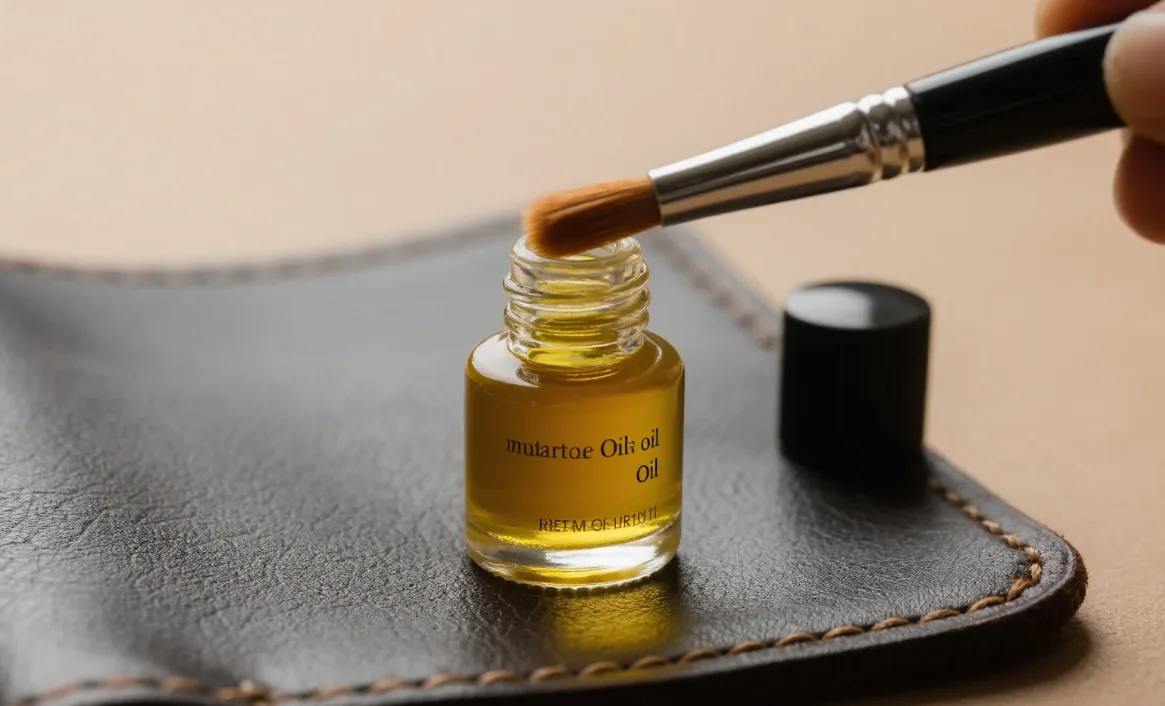When you run your fingers along a Hermès or Louis Vuitton briefcase, have you ever noticed those exquisitely smooth edges? The secret lies in a seemingly simple yet crucial technique—leather edge painting. This specialized coating, designed specifically for high-end leather goods, not only protects against daily wear and tear but also silently declares superior quality. Statistics show that 90% of luxury brand briefcases use edge paint rather than traditional sanding methods. So, how does edge painting make your custom briefcase stand out? This article reveals the five key advantages of edge paint and how top factories use it to create edges that “never crack.”
Leather Edge Paint: A Key Craft in Custom Briefcases

Leather edge paint, also known as edge coating, is a specialized lacquer applied to the edges of leather goods. It is typically made from a blend of resins, fillers, and pigments. This coating serves two main purposes: protecting the leather edges from wear, moisture, and stains, and creating a smooth, even, and visually appealing finish. Edge paint can vary in texture and appearance, offering matte, satin, or glossy finishes, and can be applied to produce either sharp or rounded edge profiles to suit different design preferences.
In custom bag making, especially for custom briefcases, edge paint is a crucial craftsmanship element. It forms a durable yet flexible protective layer that significantly enhances the bag’s durability by preventing cracking and fraying along the edges. Painted edges offer clean, seamless lines that reflect high-quality workmanship and elevate the overall aesthetic and tactile experience. Additionally, edge paint helps block dirt and oils from penetrating the leather fibers, prolonging the product’s lifespan. For brands focused on detail and premium quality, edge painting is more than just protection — it symbolizes luxury and professionalism, boosting both market competitiveness and customer appreciation.
How It Enhances Briefcase Quality

Edge Paint vs. Traditional Edge Finishing: Why Luxury Briefcases Prefer Edge Painting. In traditional leather craftsmanship, edge finishing typically involves burnishing, creasing, or wax sealing. While these methods are time-tested and cost-effective, they often lead to issues such as fraying, cracking, or discoloration over time—especially with frequent use or exposure to humidity. As a result, more and more luxury briefcase brands are turning to leather edge paint as a superior alternative to enhance both the aesthetic and longevity of their products. Compared to traditional techniques, edge paint offers significant advantages in both appearance and performance:
| Comparison Aspect | Traditional Edge Finishing (Burnishing / Waxing / Creasing/Edge Folding (Turned Edge Finishing)) | Edge Paint Finishing (Modern Leathercraft Method) |
|---|---|---|
| Seal Protection | Wax wears off over time, offering limited protection | Creates a long-lasting sealed layer against moisture and dirt |
| Visual Precision | May look uneven, depends on handcraft skill | Ultra-smooth, mirror-like finish with consistent color |
| Durability | More prone to cracking and fading | 3x more resistant to wear, perfect for frequent use |
| Customization Options | Limited color range, mostly neutral tones | Mixable pigments, wide range of colors and finishes |
| Brand Value Enhancement | Simple look, limited luxury perception | Enhances visual appeal and luxury positioning |
| Sustainability | Some wax formulas lack eco-certifications | Eco-friendly options support sustainability goals |
| Application Scenarios | Used in entry-level or casual leather goods | Common in luxury briefcases and designer items |
Leather edge paint is a specialized coating applied to the edges of leather goods. It not only protects the leather edges but also enhances the overall appearance of the product. Leather edge paint plays an indispensable role in custom briefcases. Next, we will explore in detail how edge paint enhances the quality and design of briefcases across five key dimensions…
1. Enhanced Durability and Edge Protection

The edges of briefcases are prone to friction, scratches, and daily wear and tear, which can cause damage such as abrasion, water stains, and cracking. Leather edge paint forms a tough yet flexible protective layer on the raw edges, effectively sealing the leather against moisture and dirt while reducing wear. This protection helps the briefcase maintain its shape and structural integrity, ensuring it remains sturdy and durable even under frequent use and in different environments.
2. Creates a Professional and Refined Appearance

Leather edge paint produces clean, uniform, and smooth edge lines that give custom briefcases a high-end and sophisticated look. Compared to unfinished rough edges, painted edges appear neat and polished, showcasing the craftsmanship and meticulous attention to detail of the maker. A perfectly finished edge significantly elevates the quality and aesthetic of the entire bag, especially important for business users who value a professional image.
3. Wide Range of Custom Colors and Design Options

Leather edge paints come in a variety of colors and finishes, from classic black and brown to vibrant blues, reds, and even custom shades. Designers and brands can choose colors that either match or contrast with the main leather, allowing for unique and personalized edge details. This not only enhances brand recognition but also satisfies consumers’ desires for individualized products. The colors are durable and stable, resistant to temperature changes, sticking, or cracking.
4. Suitable for Various Types of Leather

Edge paint is highly flexible and compatible with different leather types, including chrome-tanned, oil-tanned, and delicate or thin specialty leathers. Traditional edge polishing methods often struggle with these materials, but edge paint provides an effective solution that prevents cracking and peeling caused by the softness or thinness of the leather. This ensures the briefcase edges remain both beautiful and resilient.
5. Efficient Application and Adaptability to Different Production Scales

Compared to traditional edge sanding, applying leather edge paint is faster and easier to achieve a smooth, sealed edge finish. It is suitable for everything from single custom orders to small batch production runs. Its reasonable price point makes it accessible for both professional manufacturers and hobbyists, making it an economical and effective way to improve product quality.
In summary, leather edge paint is not just a protective layer but a crucial technique to elevate the quality and appearance of custom briefcases. It enhances durability by preventing edge damage, creates a sleek and professional look, offers extensive color choices and design flexibility, and is suitable for a wide range of leather types. Additionally, its efficient application process fits different production needs and budgets.
For those aiming for excellence in quality and detail in custom briefcases, leather edge paint is undoubtedly a key element. Choosing high-quality edge paint and applying it skillfully will make your briefcases more durable, refined, and unique—helping your products stand out as true premium items in the eyes of customers.
Professional Finishing Steps: Perfecting the Edges of Leather
In high-end leather bag manufacturing, the treatment of leather edges with edge paint is a crucial step to ensure product quality and aesthetics. The bag factory follows a meticulous process to enhance durability and achieve a flawless finish. The key steps are:
Step 1: Edge Preparation
The factory begins by trimming the leather edges precisely using sharp cutting tools to remove excess fibers and debris. Then, edges are sanded smoothly starting with 150-grit sandpaper and finishing with finer 400 to 800-grit sandpaper for a uniform surface. Edge bevelers are used to round off sharp corners, helping the paint adhere better and creating a smooth, natural edge.
Step 2: Applying the First Layer of Edge Paint
High-quality edge paints, such as Giardini or Vernis, are selected for their vibrant color and durability. Using precise tools like edge rollers, small brushes, or styluses, the first thin layer of paint is carefully applied only on the edge, avoiding spillage onto the leather surface. This layer is allowed to dry completely, typically within 10 to 20 minutes, laying a solid foundation for subsequent layers.
Step 3: Multiple Coatings and Sanding
The factory applies 2 to 3 layers of edge paint, sanding lightly between each layer with fine-grit sandpaper to remove imperfections and enhance adhesion. This builds a dense, smooth, and even coating, resulting in a polished, refined edge.
Step 4: Polishing and Sealing
After painting, edges are heat-polished with a clean cloth to boost shine and adhesion. Optionally, waxes such as beeswax or paraffin are applied to seal the edges, providing a smooth finish and improving wear resistance.
This detailed edge finishing process highlights the bag factory’s dedication to craftsmanship and quality, delivering leather bags with professional-grade durability and elegance that meet customers’ high expectations.
Color and Customization: Creating a Unique Luxury Look with Edge Paint

What should customers consider when customizing edge paint at a bag factory to ensure accurate color matching and blending? The factory should offer a wide range of pre-mixed colors and support custom mixing to achieve perfect coordination with the main leather. It is also important to confirm the quality of the edge paint, including its coverage and durability, to protect the leather edges and extend the product’s lifespan. Customers should consider the factory’s flexibility in handling small batches and diverse custom orders to avoid material waste and delays.
Additionally, choosing and maintaining the desired finish type is an essential part of the customization process. Customers need to communicate clearly whether they want a matte, glossy, or satin finish to ensure the final product meets design expectations. Production timelines and shelf life management are also important, as opened edge paint generally has a shelf life of about six months, so scheduling is key to avoid waste. Lastly, customers should evaluate the factory’s environmental standards and technical support to ensure the product is both beautiful and sustainably produced.

Edge paint is not just a finishing touch—it’s a critical element in creating a premium, factory-customized leather briefcase. By moving beyond traditional edge folding methods, edge paint allows the color to penetrate more deeply into the leather, enhancing durability and giving the product a clean, refined appearance. This results in edges that are less prone to cracking or fraying over time, offering lasting quality. The custom leather briefcase edge paint benefits are clear: improved longevity, enhanced aesthetics, and a truly unique finish that elevates the overall value.
In high-end custom manufacturing, every detail matters. Flawlessly painted edges demonstrate craftsmanship and attention to precision. For clients seeking luxury, brand distinction, or long-term value, professional edge paint for business briefcases ensures the final product not only looks sophisticated but also performs exceptionally. It is an essential technique that reflects both the aesthetic and structural integrity of a truly well-made briefcase.
Conclusion:
The ultimate value of edge painting lies in its perfect blend of durability and luxury. Whether it’s withstanding the daily wear of business commuting or showcasing a unique brand identity, a carefully applied edge paint makes your briefcase stand out with attention to detail.
Take action now:
Looking to upgrade your custom briefcase with professional-grade edge finishing?
Contact our craft experts to receive a free leather edge paint color card and personalized customization service!
📩 Email:[email protected] | Phone:+86-13971680726. Looking forward to helping you create a truly unique high-end briefcase!

